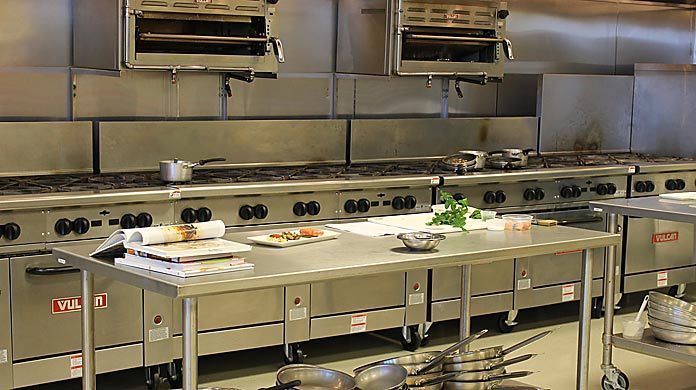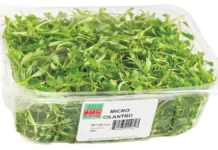
It’s so telling, it’s the first thing I look at in a restaurant
Almost nothing gets me more jazzed than conducting a walkthrough in a restaurant. I look forward to Member consults and Elite Meetings because I know I’ll be invited to go on a walkthrough. Restaurant owners love to challenge me on my guarantee that I will find $10,000 in hidden profits before I hit the back door. But what I do on these walkthroughs often surprises restaurant owners (and their staff)! That is because I take the customer’s perspective, looking for what the customer sees, including levels of cleanliness, sanitation, maintenance and more. And when I conduct one, I’m not nice at all!

In fact, on one walkthrough I conducted, the chef stormed out of the kitchen because he was so insulted by my remarks on his sub-par standards. I’ve done many walkthroughs where I have surprised fine dining restaurant owners who thought they had it all together. Did I mention that I’m not nice at all?
I have several places that I immediately look, such as under the tables for gum, any ledge or surface that can and will collect dust, thermometers in coolers — just to name a few. But there’s one place in particular where I look that’s very telling on how an owner operates the business, how profitable it is and how the staff is managed. And unless you’ve had me in your restaurant, you’d never guess where it is.
“Where?” you ask.
GASKETS! Yes, you read that correctly. I look in the kitchen at all of the reach-in refrigerators and freezers. I inspect the gaskets. You’re probably saying to yourself, “Big deal, I see them on a daily basis. What the heck will they tell you?”
Before I answer that, let me explain what it is I look for.
Wikipedia defines gaskets as a mechanical seal that fills the space between two mating surfaces, generally to prevent leakage from or into the joined objects while under compression. I look for grime, food particles, dirt, grease, mold and anything else that can find its way into the grooves. I look for wear and tear. I look to see if the gaskets are starting to break and separate from the cooler door.
OK, you might be saying, “So what if there’s grime in the gaskets? So what if they’re starting to show wear and tear? They’re gaskets! It’s not like they are some major piece of equipment that costs a lot of money.”
Oh, I beg to differ. Let me break it down for you:
When the gaskets start to separate from the cooler door, you lose refrigeration. That means the compressor is working extremely hard to keep the cooler at the right temperature. This means higher electric bills (costing you money). This will shorten the life of your compressor and require repair or replacement (costing you money). This will potentially cause your food to become unsafe to serve — requiring you to throw it away or even worse, harm a guest (both costing you money). Oh, and there is of course the cost of replacing the gaskets. All of this because the gaskets have grime in them.
When a gasket isn’t clean or has food, grease or mold (and probably bacteria in them as well), you create an unsanitary, unsafe kitchen! Think about it. Your kitchen staff preps and cooks raw food products, ranging from chicken to vegetables. As they grab and go, or replenish for the rush, their hands have been and go everywhere. And no matter how good your glove or hand-washing policies are, they’re going to grab the cooler doors, touch the gaskets and ultimately touch something else, like the food going out to table 22.
Your gaskets become a breeding ground for things that would make any Petri dish explode with growth — and that can spell disaster. It’s one thing to have a clean surface; it’s another to have a sanitary surface.
So what does this tell me? Why am I making such a big deal about such a common and small problem found in almost every restaurant kitchen? I’ll tell you…
- Poor training: This is a definite sign of poor food safety training. If your kitchen team is properly trained, they fully understand what they have to do to keep a clean and sanitary kitchen. They understand the causes of cross contamination and what they need to do to avoid endangering your guests.
- Lack of systems: This is a clear-cut symptom of lack of cleaning checklists and documented kitchen procedures. It means you assume that every employee in the kitchen knows exactly what to do, how you want it done and how well you want it done when it comes to cleanliness and sanitation (when more often than not, they don’t).
- Lack of supervision and management: This quickly shows me that management, on every level, doesn’t understand what needs to be done, doesn’t bother to check people’s work, doesn’t train and doesn’t hold anyone accountable. Oh sure, this sounds like a bit of an exaggeration, doesn’t it? But it’s usually not too far from the truth.
Let me share a story with you…
I went on a consult of a multi-unit operation. I did my very direct, kick-in-the-pants style walkthrough in each location with the manager following me close behind. When I was finished, each manager had been significantly bruised and the owner was thrilled to be taking her business to the next level.
I spoke with the owner on the phone a few days after my visit. She shared with me that one of the managers was confused why she would bring a systems expert into her location and that expert didn’t spend any time on systems. Instead, this expert beat her up on cleanliness and sanitation. The owner replied, “He looked there first, because if you can’t do the little things well, what makes you think you can do the big things well?”
In other words, profitability starts with doing the little things well and having management that knows what needs to be done, how to do it and how well it should be done to ensure the process is working. They use simple checklists that make sure what you want done gets done every day.
So how do you change dirty gaskets into a positive?
- Train, train, train: Send all of your kitchen people through a ServSafe Certification class or local health-department-approved course.
- Inspect what you expect: Create daily, weekly and monthly cleaning and sanitation checklists, manager checklists, and walkthrough inspection forms (or simply log into members.therestaurantexpert.com and download them).
- Change your perspective: Walk through your restaurant at least monthly with a customer’s and health inspector’s eye. This isn’t hard to do, but you have to make a conscious decision to do so. You’ve been walking your restaurant for what seems like forever and you’ve most likely lost the ability to see the little things. After a while even the dust bunnies look like they belong.
Look closely. What do your gaskets look like?
If they are anything like what I just described, odds are your bathrooms need attention, you have gum under your tabletops, there’s dust everywhere, and your sidewalks and back dock areas look worn and dirty. Now ask yourself: “Is that really how I want my restaurant to look?” “And if my operation looks like this, what else am I missing that is costing me a lot of money?”
And last but not least, when you find things that need attention… take action!























